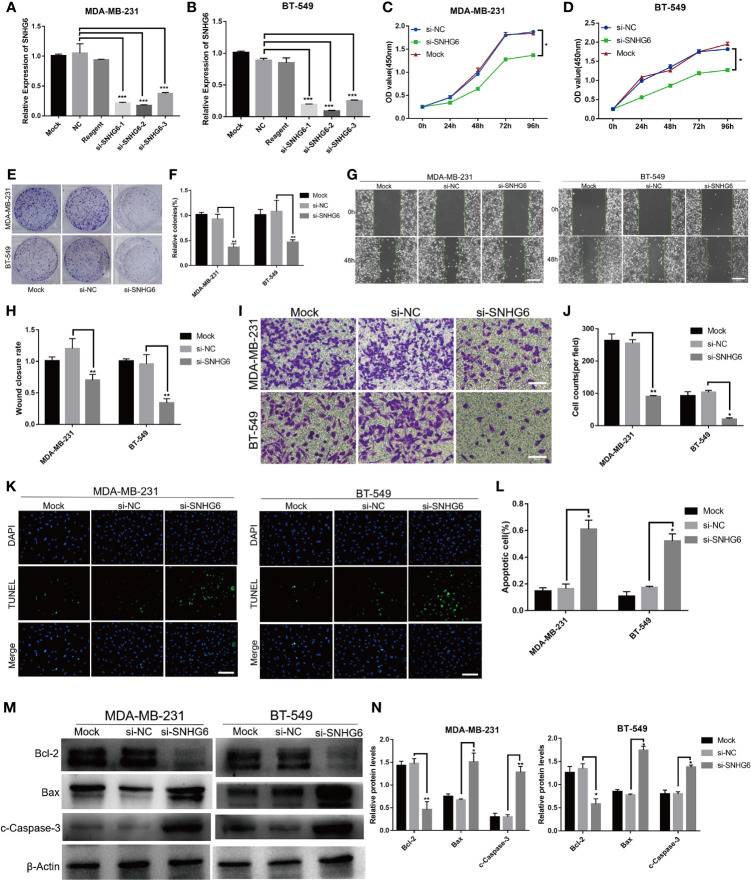Figure 2.
Suppression of lncRNA SNHG6 attenuated TNBC cell migration and proliferation, while promoted cell apoptosis. (A) The siRNA targeting lncRNA SNHG6 inhibited lncRNA SNHG6 expression in MDA-MB-231 cells. (B) The siRNA targeting lncRNA SNHG6 inhibited lncRNA SNHG6 expression in BT-549 cells. (C) lncRNA SNHG6 inhibition suppressed the proliferation of MDA-MB-231 cells. (D) lncRNA SNHG6 inhibition suppressed the proliferation of BT-549 cells. (E) Representative colony formation images of MDA-MB-231 and BT-549 cells. (F) lncRNA SNHG6 inhibition reduced colony-forming of both two kinds of cells. (G) Representative wound healing assay images of MDA-MB-231 and BT-549 cells. Magnification×40; Scale bar, 200 μm. (H) The inhibition of lncRNA SNHG6 suppressed migration capability of MDA-MB-231 and BT-549 cells. (I) Boyden chamber cell migration assay in MDA-MB-231 and BT-549 cells, respectively. Magnification ×100; Scale bar, 100 μm. (J) lncRNA SNHG6 inhibition diminished migration capability of both two kinds of cells. (K) TUNEL assay in MDA-MB-231 and BT-549 cells, respectively. Magnification×100; Scale bar, 100 μm. (L) lncRNA SNHG6 inhibition promoted apoptosis capability of both two kinds of cells. (M) The protein expression of Bcl-2, Bax and c-Caspase-3 in MDA-MB-231 and BT-549 cells. (N) lncRNA SNHG6 inhibition induced the protein expression level of Bcl-2 decreased while the level of Bax and c-Caspase-3 increased. *P < 0.05, **P < 0.01, *** P < 0.001 vs. si-NC; n = 3.

